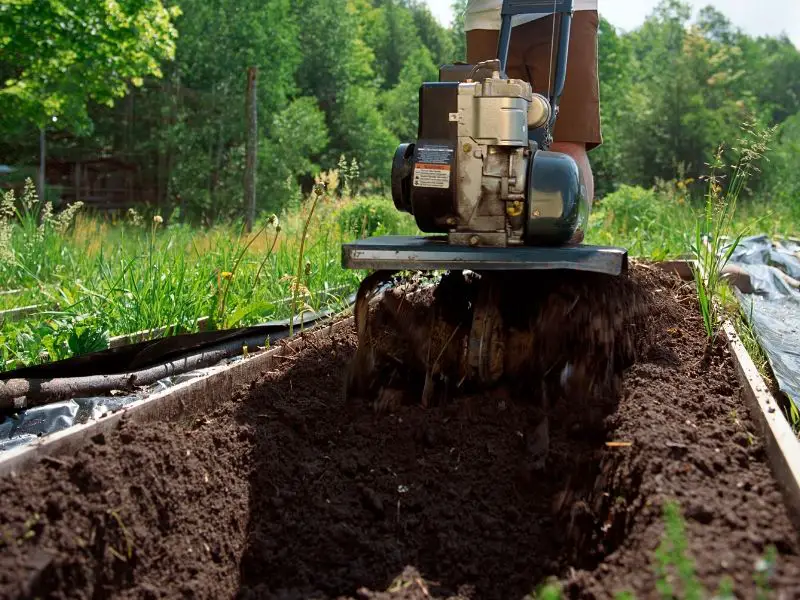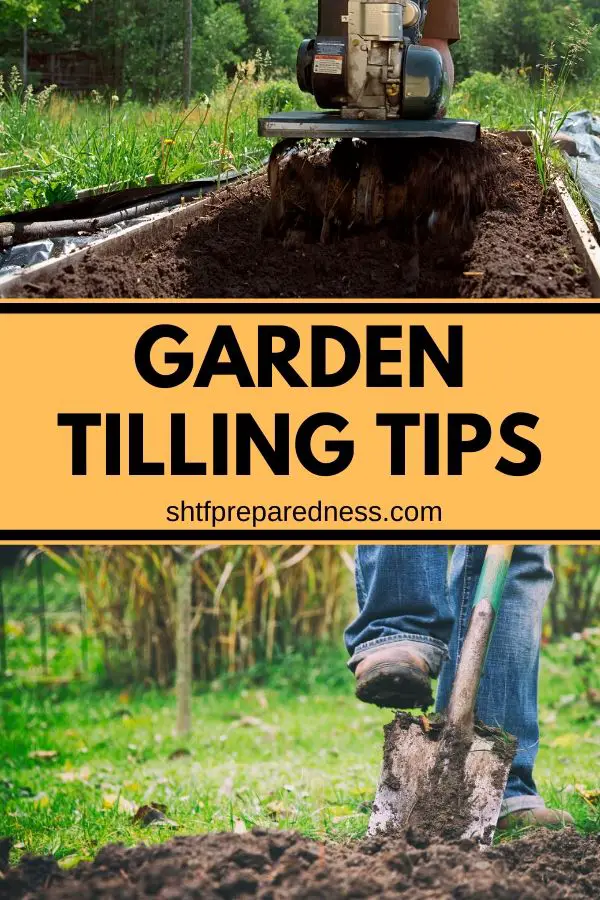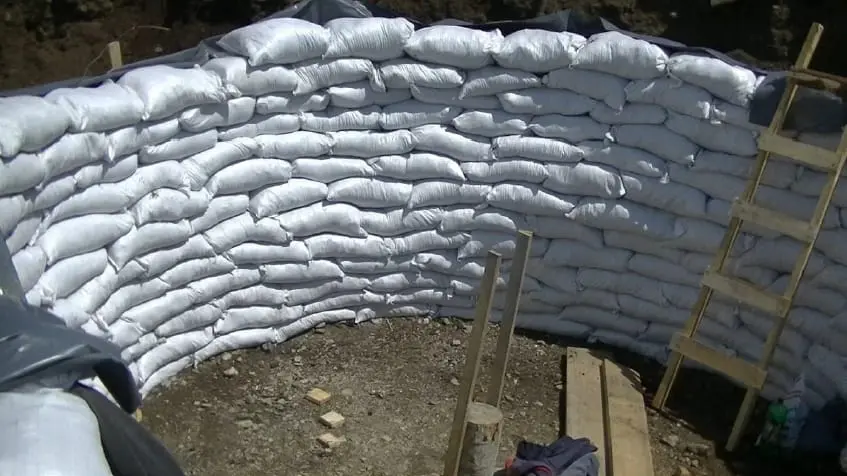How Deep To Till A Garden
SHTFPreparedness may collect a share of sales or other compensation from the links on this page.
Starting a home garden is a sure way to improve your food security without spending too much money. However, you must get it right in order to enjoy good yields. Of the many questions, a new gardener can ask is how deep do you till your vegetable garden? Let's look at some garden tilling tips, so you can do it right from the start.

The aim of tilling is to loosen soil and aerate it. This encourages the penetration of vegetable roots.
A healthy root system is the main determinant of your garden's productivity. Another tilling goal is to help mix the soil with amendments to improve soil quality.
Nevertheless, deep tilling is only recommended for virgin gardens. The reason behind the deep tilling of virgin gardens is the condition of the ground.
New gardens are likely to be compacted by natural elements and human activities. Besides, there could be a minimal bacterial activity to promote fertility in the soil.
Established gardens, on the other hand, are not compacted. They also tend to have serious bacterial activity right below the surface of the soil. Thus deep tilling could upset bacterial activity and interfere with the soil condition.
How to Determine Tilling Depth For Your Vegetable Garden
As you have already seen the initial determinant is the age of the soil. The newer the soil, the deeper you will have to till it.
The other important determinant is the type of vegetables you intend to grow in your garden. For instance, vegetables like squash and watermelon may need deep tilling. Cucumber, peas, kale, and eggplant require medium-depth soil.
You will need to dig shallowly if you intend to plant corn, garlic, and endive among other vegetables.
Tilling Depth for a Virgin Garden
In your first year of gardening, experts recommend that you till to a depth of 6 – 10 inches. You need to use a tiller that allows for tilling depth adjustment.
The best time to till your new garden is early in spring. Till when the soil is slightly moist. If you wait until the fall, the soil may be too wet.
Wet soil may be easy to till. However, it will clump as it dries. This will cause you problems during planting as well as seed germination. After the first till, amend the soil with about 2-inches of compost manure.
Also, you can use an appropriate organic matter. This will improve soil aeration and drainage. You should also amend the soil based on the results of your soil test.
Proper tilling will mix the organic matter or compost and other amendments with the soil. By the end of the tilling process, your soil will be well aerated and well-drained. It will have a workable depth of 8 inches to 12 inches.
Such depths are ideal for vegetables like corn, endive, and garlic among others.
What about Double Digging Depth?
I would recommend a rototiller for the first tilling. I believe a rear tine tiller would be the best option. They do a better job of delivering high even and smooth tillage.
For a second digging, you will need a shovel and not a rototiller. The garden bed after double-digging will have an average depth of 24 inches.
To achieve such depth, you first need to make rows of 1 ft each. Collect the soil from one row to the tilling depth and heap it along the adjacent. Work the remaining ground just like the first time to achieve a depth of 12 inches. Refill the heaped soil back to the row you have just dug. This will achieve a depth of about 24 inches.
Do the same thing to the adjacent row. In the end, you will have achieved a uniform tilling depth of about 24 inches. This is probably how deep it can go.
However, certain rototillers can achieve even deeper tillage. Deep tilling depths are great for deep rooting vegetables, such as:
- squash
- sweet potatoes
- tomatoes
- watermelons
How Deep To Till an Existing Garden
In case yours is an established vegetable garden, deep tilling will not be necessary. For such gardens, a simple single-time till suffices.
Your goal should be to overturn the topsoil right where it lays. The aim of such shallow digging is to avoid bringing weed seeds to the surface. It also avoids interfering with the ecosystem that exists right beneath the surface.
The goal of tilling an established garden is to loosen the surface soil to promote aeration. It also buries organic matter into the soil to improve the soil condition.
All you need to do is to lift the top 2 inches or 3 inches of the surface soil with a shovel. Turn the shovel with the soil over. The soil will fall back into place.
The result is even planting ground for your seeds and new plants.
Can You Plant A Garden Without Tilling?
If you desire a garden, but the only available space is on a slope, then you can plant your vegetables without tilling.
No-till gardening is also a great choice for physically challenged individuals.
This method utilizes organic matter. Such mater must have been composting for the past year onto the surface soil of the garden.
You will need to have a good-sized compost pile. This will allow you to get enough material to layer on top of your garden to provide nutrients for your plants. Experts call this method lasagna gardening.
The initial layer of the matter should be composed of newspaper cuttings. Thick cardboard may also work.
Follow the first layer with another layer of a well-rotten mature. An alternative is another well-composted organic material.
The best materials for the second layer are:
- straw
- grass clippings
- dead leaves
The resulting lasagna garden bed will have a depth of 8 to 10 inches. The layer is rich with organic matter that will keep weeds out and moisture in. Such planting depth is ideal for vegetables like:
- cabbage
- broccoli
- cauliflower
Conclusion
So, how deep do you till your vegetable garden? As you see, only new gardens require very deep digging.
Certain garden vegetables will require deep soil because of their deep rooting system. Ensure you know the growth characteristics of the crops you intend to plant. Know also of the basic requirements of your preferred veggies.
You can then use this guide to help you know the right depth for your vegetable garden.

Bonus: Root Cellar That Can Be Used as a Bunker

Do you remember the old root cellars our great-grandparents used to have? In fact, they probably built it themselves, right in their back yard.
If you want to learn how to build a backyard bunker like your grandparents had, without breaking the bank, then you need Easy Cellar.
Easy Cellar will show you:
- How to choose the ideal site
- Cost-effective building methods
- How to protect your bunker from nuclear blast and fallout
- How to conceal your bunker
- Affordable basic life support options
Easy Cellar will also reveal how a veteran, with only $421, built a small nuclear bunker in his backyard.
Also included:
- America's Natural Nuclear Bunkers: Find the Closest One to Your Home
- 56 Items to Stockpile in Your Easy Cellar
How Deep To Till A Garden
Source: https://www.shtfpreparedness.com/garden-tilling/
Posted by: frostdescear.blogspot.com

0 Response to "How Deep To Till A Garden"
Post a Comment